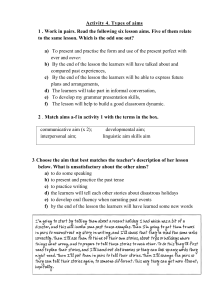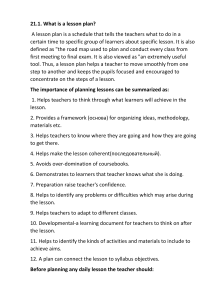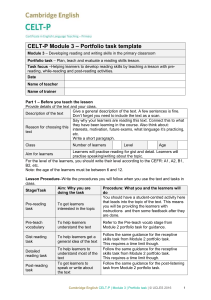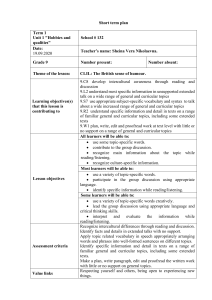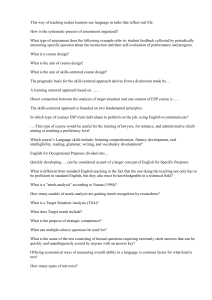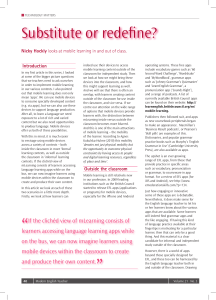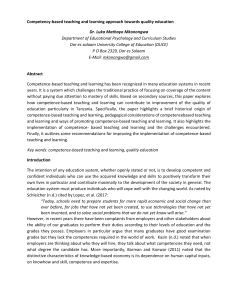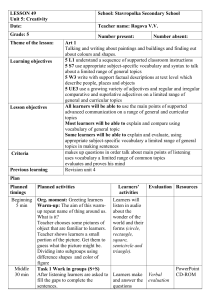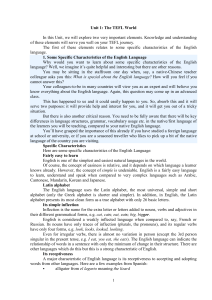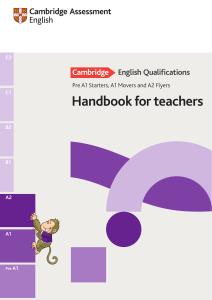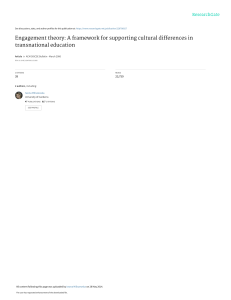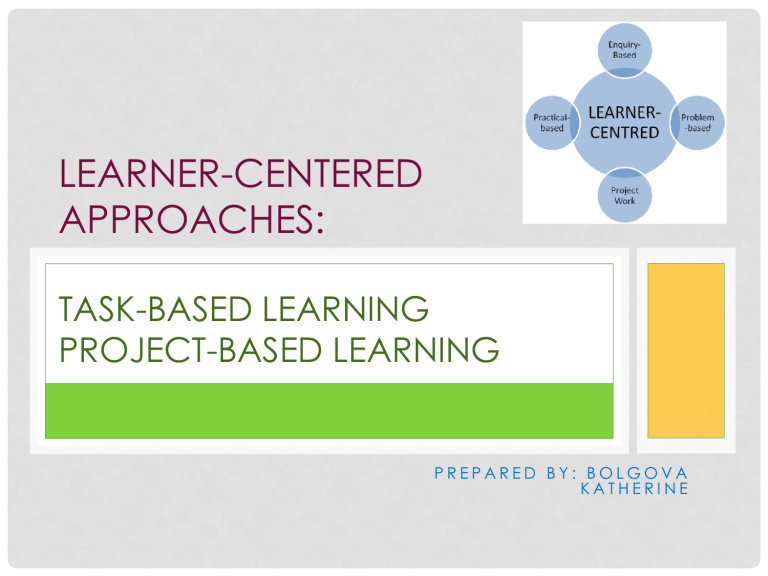
LEARNER-CENTERED APPROACHES: TASK-BASED LEARNING PROJECT-BASED LEARNING PREPARED BY: BOLGOVA KATHERINE Learner centred teaching is an approach that places the learner at the centre of the learning. This means that the learner or student is responsible for learning while the tutor is responsible for facilitating the learning. Encourages collaboration Includes explicit skill instruction Characteristics of LearnerCentered Teaching Engage students in the learning process Motivates students by giving them control over learning process Encourages students to reflect what they are learning and how they are learning it Here’s a quick comparison of what learner centred teaching might include versus a more traditional teacher-centred approach. Learner-centred Teacher-centred The focus is on both the learners and the teacher. The focus is on the teacher who is the expert. The focus is on how the learners will use the skills or content. The focus is on what the teacher knows about the skills or content Teacher models. Learners interact with teacher and each other. Teacher talks. Learners listen. Learners work in pairs, groups, or alone depending on the task. Learners work alone. Learners work without constant monitoring and correction. Tutor provides feedback or corrections as questions come up. Teacher monitors and corrects. Learners have some choice of topics. Teacher chooses topics. Learners evaluate their own learning. Tutor also evaluates. Teacher evaluates student learning. Learning environment (may not be a classroom) is often noisy and busy. Learning environment (usually a classroom) is quiet. Two such learner-centered approaches are TBL (taskbased learning) and PBL (project-based learning). • In task-based learning, the central focus of the lesson is the task itself, not a grammar point or a lexical area, and the objective is not to ‘learn the structure’ but to ‘complete the task’ • Project-based learning (PBL) is an approach to teaching that highlights the use of problem-solving and collaboration in the design of authentic, real-life projects • Task-Based Learning (TBL) is a lesson structure, a method of sequencing activities in your lessons. • Sometimes called ‘Task-Based Language Teaching’, TBL lessons students solve a task that involves an authentic use of language, rather than completing simple language questions about grammar or vocabulary. • Task-Based Learning is a good way to get students engaged and using English. That, plus the collaborative element, builds confidence with language and social situations. It’s also been shown to be more aligned with how we actually learn a language. • Task-Based Learning is a structure with three stages: 1. The Pre-Task- the focus of the stage is to engage the learners, set expectations and give instructions. 2. The Task-the focus of this stage is fluency - using the language to communicate without falling into L1 unless really needed. 3. A Review-the aim for this stage is accuracy reflecting on completed work and analysing it. There is a number of advantages and disadvantages for task-based learning Advantages Disadvantages • Student interaction is ‘built in’ to the lesson, as they need to communicate to complete the task • Students’ communication skills improve • Students’ confidence can improve, as tasks can mimic real life • Students’ motivation can improve due to the same reason • Students’ understanding of language can be deeper, as it’s used in realistic contexts • • • • • Tasks have to be carefully planned to meet the correct criteria It can take longer to plan It’s also time consuming adapting PPP-style course book lessons Too much scaffolding in the early stages can turn a TBL class into a PPP class Students can avoid using target language to complete the task if: Tasks aren’t well-designed Students aren’t motivated Students are too excited Students are feeling lazy • Project-based learning involves students refining and honing their language skills through the completion of projects both in and outside of the classroom. What is a project? • A project is an extended task which usually integrates language skills through a number of activities. These activities combine in working towards an agreed goal and may include planning, the gathering of information through reading, listening, interviewing, etc., discussion of the information, problem solving, oral or written reporting, and display. Advantages and disadvantages of project work Advantages Disadvantages • enhancing learners’ autonomy • classroom management • fostering motivation and changes radically engagement • students and teachers need to • developing language learning undertake different roles and and skills they might probably feel • catering for individual uncomfortable with that differences change. • authentic use of the L2 • students without experience in • developing problem-solving skills group work may have difficulties • enhancing cooperative learning negotiating compromise • integrating content and language learning Conclusion • Both approaches engage the participant in the learning process and encourages them to reflect on what they are learning and how they are learning it. They also help them develop life skills. The approaches help students learn how to think, solve problems, make decisions, work as a team member, evaluate evidence, analyze arguments, and generate ideas.
